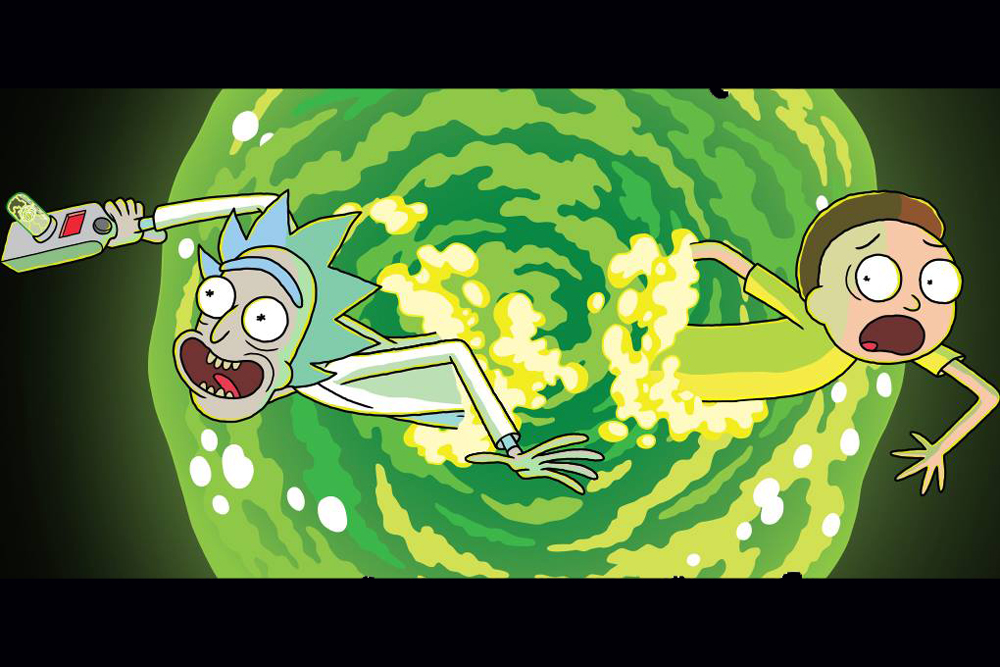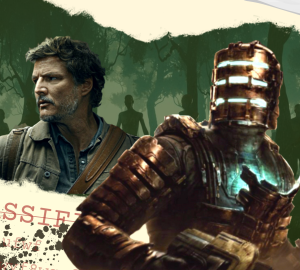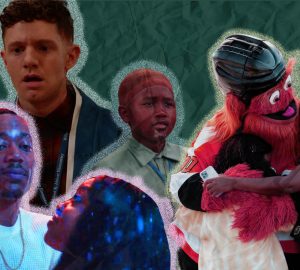‘Rick and Morty’s’ second season exceeds the show’s already-high expectations

By Tyler Spinosa
Adult Swim’s newest breakaway original series, “Rick and Morty,” has made a meteoric impact on viewers after its first season ended in April of 2014. In a network where fever dream-like, raw, surrealist programming is no stranger, “Rick and Morty” fits right at home in the classic Adult Swim paradigm. “Rick and Morty’s” second season exceeds the show’s already-high expectations
With the start of the show’s second season this past fall, creators Dan Harmon and Justin Roiland have outdone themselves in expanding on what made this hilarious animated romp through the cosmos work so well in the first place.
Rick Sanchez (Roiland) is an alcoholic super genius who leaves his family after his marriage falls apart. Years later, after his only daughter Beth (Sarah Chalke), a horse heart surgeon, has a family of her own, Rick returns to live with her, her semi-employed and insecure husband, Jerry Smith (Chris Parnell), their oldest teenage daughter Summer (Spencer Grammer) and their goofy and dim-witted son Morty (Roiland). Rick drags Morty along with him through time and space and infinite potential realities on perilous adventures while juggling their dysfunctional family lives and trying to find purpose amidst the eternal nothingness of existence in the face of unfathomable horror.
Season Two kicks off with a “A Rickle in Time,” a direct sequel to the Season One finale “Ricksy Business,” in which Rick throws a house party that ends up in another dimension while Beth and Jerry are away on a Titanic-themed vacation and he is forced to freeze time to keep them from finding out about it. “A Rickle in Time” resumes after a month has gone by and Rick, Morty and Summer all have the opportunity to bond and clean the house. But when they unfreeze time again they manage to split reality into several parts based on Schrodinger’s Cat, which is a famous thought experiment in relation to a major concept in quantum physics. The rest of the season follows suit with several moments that leave you genuinely wondering how on earth they came up with something so incredibly funny, creative, mind-blowing and subversively sad.
For example we witness Rick rekindling a relationship with an old flame from his earlier years, who also happens to be a hive mind entity much like the Borg from “Star Trek.” We also watch as Morty plays “Roy,” a game at the intergalactic arcade “Blits and Chips” that involves putting on a virtual reality helmet where you take on the life of a young boy named Roy. The game is then to live his life and after several decades in the game, gaining a family and surviving cancer, Morty forgets who he is and genuinely believes he is Roy. That is, up until he falls off of a ladder in a carpet store, dies and is jolted awake with the words “Game Over.” Morty essentially lives an entire lifetime inside the simulation and then struggles to determine what is real afterwards.
The second season of “Rick and Morty” also focuses very heavily on the nature of the family’s extreme dysfunction, sometimes veering into incredibly dark territory. Many of the sad underlying tones in the first season were only referenced in a couple of episodes and scenes. The inherently dark nature of the show is really defined at the end of the Season One finale, setting the stage for a bleak second season. Bird Person (Harmon), Rick’s half-man, half-bird best friend, explains to Morty the meaning of Rick’s seemingly nonsensical catchphrase “Wubba lubba dub dub,” which in Bird Person’s language translates into “I am in great pain, please help me.” He explains that this is why Rick is constantly drinking and trying to numb himself. Morty chalks this up to Rick being a jerk and just not caring, then says how he shouldn’t care if his parents catch them after having the party because he doesn’t want to go on adventures with Rick anymore anyway, to which Bird Person replies with another saying from his people: “Gubba nub nub dooracha,” or “Whatever helps you sleep at night.”
This exchange informs the tone of the second season in which Morty ultimately decides to help Rick but continues to question whether he even cares for the family at all. This is what the series teeters on all season where the danger present often causes Rick and Morty or Beth and Jerry to erupt into an explosive argument, like at the end of “A Rickle in Time,” when the uncertainty of their 64 separate realities are collapsing and they need to put on special collars that will realign their realities and return them to certainty. In one of the 64 possible realities, Morty’s collar breaks and won’t latch closed. So because of this all other 63 realities are not aligned, which keeps Morty from returning to safety, with Rick staying to help him. In all of the other realities on screen the two are unaware of the situation outside their own, and in these Rick is cursing Morty for essentially killing them both while Morty is furiously screaming at Rick that he never wants to see him again. Ultimately, in that 64th reality, Morty drops the collar into empty space and Rick then gives up his own collar to send Morty back. Rick accepts that he is going to die and says, “I’m okay with this. Be good Morty. Be better than me.” But then at the last minute, Rick manages to find and fix the broken collar and return to certainty before he is removed from existence. Subsequently Rick doesn’t own up to what he did to save Morty and playfully berates him, concealing the caring part of himself.
It is safe to say that Rick and Morty can be counted on when it comes to compelling and complex new storylines that do not disappoint. This gem of a series will make you laugh, scratch your head in awe, and even cry. If you have yet to watch it then catch up on the first two seasons and join in on the torturous year and a half until Season Three premieres.























